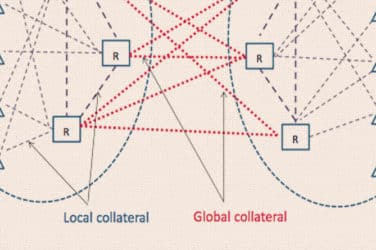
Move to execution, clearing and reporting entails massive operational complexity.
Market participants are girding themselves for operational and technological changes being ushered in by derivatives reforms.
As the Dodd-Frank Act, European Market Infrastructure Regulation (EMIR) and Markets in Financial Instruments Directive (MiFID) and similar measures are adopted, the large majority of swap contracts currently traded over the counter (OTC) directly between two parties will migrate to multi-party electronic trading platforms.
“A key factor in successfully implementing these initiatives will be the ability to standardize OTC derivative contracts, which is a significant challenge given the bilateral nature of these contracts and the common practice of customizing the contracts to fit specific business needs,” Sean Hennigar, capital markets practice lead at SWI, told Markets Media.
“Data models used today for exchange-traded derivatives are not well suited to these types of transactions as they often require more complex data structures,” said Hennigar.
Nearly all of the major exchanges have their own clearinghouses—the so-called “vertical silo” model—where trades made on the exchange are automatically channeled to a bourse’s own clearing house.
The acquisition by London Stock Exchange Group of a majority stake in LCH.Clearnet is intended to bolster LCH’s ability to compete for both listed and OTC clearing services, while preserving LCH.Clearnet’s horizontal model. LSEG has committed to LCH.Clearnet’s principles of an open access, horizontal multi-asset class and multi-venue clearing model, LCH said.
The new “ecosystem is fundamentally different from both the bilateral trading model, in which OTC swaps have traditionally existed, and the exchange-traded model,” said John Omahen, vice president of post-trade derivatives processing at SunGard’s capital markets business.
“The exchange-traded model is a vertical model, where we know how the trade will get executed and cleared,” said Omahen. “In the new world, it’s a horizontal model, where there’s a choice of swap execution facilities, CCPs, and swap data repositories.”
The new regulations will also impose collateral requirements and real time reporting requirements designed to reduce counterparty credit risk and bolster market transparency.
Most OTC trading today takes place over the phone, so “moving to this new heterogeneous environment creates challenges,” said Omahen.
As the universe of cleared products expands, post-trade service providers are providing clients with a single-point of connectivity to transact with multiple counterparties and to direct trades to multiple CCPs and trade repositories.
MarkitSERV, an electronic trade processing service for OTC derivative transactions, has launched connectivity and workflow tools in support of LCH.Clearnet’s expanded service for SwapClear, its interest rate derivatives clearing service.
The workflow functionality will benefit U.S. clients subject to the Dodd-Frank Act. For example, MarkitSERV enables asset managers to select multiple FCMs on a single block trade, have block trades cleared by SwapClear on a split-by-split basis, and “anonymize” sub-accounts and FCMs on any given trade.
Executing brokers can use MarkitSERV to designate their own clearing member for trades cleared through SwapClear.
State Street Corp. is launching a swap execution facility, SwapEx, for the trading of derivatives products, as part of an end-to-end processing platform including execution, clearing, collateral management, cash and securities flows between the middle and back offices, transaction cost and risk reporting, valuations, and the reconciliation of positions.
In 2011, State Street expanded its futures commission merchant services to cover swap clearing capabilities. The derivatives clearing offering combines the expertise of eExchange, a division of State Street Global Markets and State Street Global Services.





